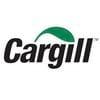Check out what is new in Pig Industry
Find the best technical articles, forums, and videos on Pig Industry at Engormix. Enter now and interact with the world's largest agricultural social network.

Magicoh Pellet Binder provides a cost-effective solution to solve your binding problems. In fish/shrimp/prawn feed, it’s used to improve water stability and durability, and in poultry and piglet feed, it can enhance PDI and reduce the production of dust. It helps you produce a pellet rather than dust. Contact me for more information: Email: jzfong@de-mark.com WhatsApp: +8613588089289 WeChat ID: a97896085a ...
Comments : 0
Recommendations: 0

Michael Joseph, Assistant Professor & Extension Specialist at NC State University, discusses the potential and caveats of using alternative protein sources in animal production during this Engormix interview. ...
Comments : 0
Recommendations: 0

In this Engormix interview, Michael Joseph, Assistant Professor & Extension Specialist at NC State University, discusses the use of various combinations of feed additives to maintain gut health and how technology and precision nutrition can contribute. ...
Comments : 0
Recommendations: 0
This article explores the alarming link between swine manure management practices — specifically pit/lagoon agitation and emptying — and the occurrence of Porcine Reproductive and Respiratory Syndrome (PRRS) outbreaks.
The study, conducted between July 2019 and June 2020 and collecting data from 150 affected sow farms, demonstrates a definitive temporal relationship between these practices and the probability of reporting a PRRS outbreak. Authors Carles Vilalta,...
Comments : 0
Recommendations: 0
Featured users in Pig Industry

Francis Simard
Trouw Nutrition
Agr., M. Sc. / Nutrition and Development Director at Trouw Nutrition Canada
United States
United States
Respiratory diseases hurt swine operations on both the input and output side of the equation: feed costs rise as performance plummets. New research suggests that by using soybean meal, you can mitigate these challenges as a cost-effective tool for maintaining pig health and performance during outbreaks. Respiratory Diseases Present Challenges When pigs are infected with respiratory diseases such as swine respiratory disease (SRD) and porcine...
Comments : 1
Recommendations: 0
1. Introduction Reducing the particle size of cereal grains increases the digestibility of starch and energy by pigs (Huang et al., 2015; Rojas and Stein, 2015; Lee et al., 2024) and it is likely that surface area of grain particles and interactions between particles and digestive enzymes are increased by reducing particle sizes. In contrast to the demonstrated improvement in the digestibility of starch and energy, effects of particle size reduction on digestibility of amino...
Comments : 0
Recommendations: 0


Isoleucine Plays a Critical Role in Low-Protein Diets
Suggested link

Michael Joseph, Assistant Professor & Extension Specialist at NC State University, explains how the food and feed industries are producing more with less, finding strategies to become more adaptable and efficient, in this Engormix interview. ...
Comments : 0
Recommendations: 0
Porcine Reproductive and Respiratory Syndrome (PRRS) is a highly challenging and complex viral disease that severely affects both the reproductive and respiratory systems of pigs. PRRS leads to significant economic losses in pig industries worldwide due to decreased productivity, increased mortality, and costly control...
Comments : 0
Recommendations: 0
ARLINGTON, Va. – The American Feed Industry Association (AFIA) is calling on U.S. policymakers, trade officials and the food and agriculture industry to work together on mitigating the potential threat of a U.S. vitamin and amino acid supply disruption. The call comes following the release today...
Comments : 0
Recommendations: 0
The demand for "Golden September and Silver October" fell below expectations. In September, the market exhibited signs of a significant recovery, with tentative rebounds. However, in October, the overall market trend shifted from strength to weakness, entering a phase of volatility. The factors driving price increases from the supply side are gradually diminishing. Categories that were previously strong have experienced compensatory declines as the market moved from divergence to consensus,...
Comments : 0
Recommendations: 1
The use of feed enzymes in monogastric nutrition has been a cornerstone of feed efficiency and environmental management for decades. However, a recent analysis suggests that the industry's long-held "scientific dogma" may be limiting the full potential of these additives. In an article on AB Vista's website titled "Enzymes through the ages: rethinking their use in animal nutrition," Mike Bedford (AB Vista) argues that the industry's focus on simple, measurable outcomes has created a...
Comments : 0
Recommendations: 1
A review by F.P. Bortolozzo, M.B. Menegat, A.P.G. Mellagi, M.L. Bernardi, and I. Wentz, published in Reproduction in Domestic Animals (Reprod. Domest. Anim. 2015, 50, Suppl. 2, 80–84), examines new strategies to improve the efficiency of artificial insemination in swine. The primary goal is to reduce the number of sperm cells required per insemination dose while maintaining high reproductive performance, a key factor in optimizing the use of high-genetic-merit...
Comments : 0
Recommendations: 0
1 Introduction Global consumption of pork has increased greatly, making it the second most consumed meat, representing > 34% of global meat consumption (2022 estimates) (1, 42). Studies reveal a 77% growth in pork demand from 1990 to 2022 (2) and with the growing world population and economic growth, the demand is likely to continue growing (2, 3). Consequently, global pig production has grown by about 140% from 1990 to 2021 (42). The USA, Mexico, and Canada ranking among the...
Comments : 0
Recommendations: 0
In the world of animal feed manufacturing, some parameters shout: protein levels, energy values, additive profiles. Others whisper, quietly shaping performance from behind the scenes. Particle size is one of those silent drivers. And yet, for monogastric species like pigs and poultry, it can be the difference between optimal feed conversion and costly inefficiencies. I’ve spent over three decades in feed process technology, and if there’s one...
Comments : 0
Recommendations: 3
1. Introduction African swine fever (ASF) is a devastating hemorrhagic disease of domestic pigs and wild suids caused by a large double-stranded DNA virus, African swine fever virus (ASFV). ASFV is the only member of the Asfarviridae family and only members of the Suidae family are susceptible to ASFV, which has no zoonotic potential [1,2]. Virulent strains of ASFV can kill domestic pigs within about 5–14 days of infection, with a mortality rate approaching 100% [3]....
Comments : 0
Recommendations: 0
1. Introduction Consistent information on animal nutrient requirements and feedstuff characteristics is non-negotiable when proposing precise feeding programs [1]. This information allows nutritionists to determine a given amount of feedstuffs that will provide a diet that will allow production goals to be achieved at an optimized feed cost. Feed formulations can be established using published values of ingredient composition, such as the NRC [2] and Rostagno et al. [3]....
Comments : 0
Recommendations: 0


Isoleucine Plays a Critical Role in Low-Protein Diets
Suggested link
1. Introduction The swine industry is continually working to improve all aspects of pork production; the development of efficient, yet diagnostically sensitive, disease detection and surveil lance methods is a significant part of this ongoing effort. First described in 2008 for the surveillance of porcine reproductive and respiratory syndrome virus (PRRSV) and porcine circovirus type 2 (PCV2) [1,2], pen-based oral fluids are widely used because of the reduced labor and cost...
Comments : 0
Recommendations: 0
1. Introduction The agricultural sector is currently facing significant challenges, with health considerations, such as increasing pressure due to antibiotic restrictions and the need to ensure the welfare and sustainability of livestock farming, being of paramount importance. Consequently, the implementation of intelligent biosecurity (IB) is non-negotiable since it is clear, as stated by Capper [1], that we will not move towards a better industry if we do not eliminate the diseases...
Comments : 0
Recommendations: 0
Effective sow management is a cornerstone of modern pig production, directly impacting herd productivity and overall farm profitability. Proper care and nutrition of sows not only improve reproductive performance, but also enhance piglet health and survival rates. As swine production becomes more intensive and...
Comments : 0
Recommendations: 1
1. Introduction Weaning is recognized as a highly stressful period for young pigs, during which they experience maternal separation, new social and dietary conditions, and critical physiological changes. These stressors, often compounded by suboptimal sanitary conditions on farms, can lead to severe outbreaks of diarrhea, typically linked to the proliferation of specific pathogens. The most commonly implicated bacterial pathogen is Escherichia coli [1]. However, once dysbiosis and...
Comments : 1
Recommendations: 0












.jpg&w=3840&q=75)


















